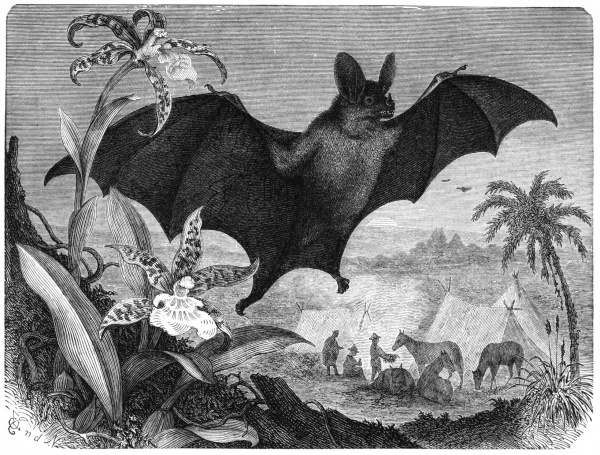Facts About Spectral bat
The Spectral Bat, also known as the False Vampire Bat or Linnaeus's False Vampire Bat, is a remarkable species native to Mexico, Central America, and South America. Belonging to the Vampyrum genus, it is the largest bat species in the New World, with a wingspan extending from 0.7 to 1.0 meters.
Featuring a robust skull and sharp teeth, the Spectral Bat is well-adapted for hunting prey such as birds, rodents, insects, and even other bats. Unlike many other bat species, these bats exhibit monogamous behavior, forming close-knit colonies typically composed of an adult male, an adult female, and their offspring. They usually roost in tree hollows, bringing their prey back to these secluded spots to consume.
Regrettably, due to habitat destruction and their naturally low population density, the Spectral Bat is considered near-threatened by the International Union for Conservation of Nature (IUCN).
First described by Carl Linnaeus in 1758, the Spectral Bat belongs to the subfamily Phyllostominae. It shares a close evolutionary relationship with the Big-Eared Woolly Bat, having diverged from other leaf-nosed bat species approximately 20.75 million years ago.
Renowned as the world's largest carnivorous bat, the Spectral Bat is easily identified by its large nose-leaf, elongated skull, and powerful bite force. It employs echolocation to hunt, with a particular preference for birds and insects.
Spectral Bats are also notable for their reproductive behaviors. They are monogamous and exhibit significant parental care, with males providing food for females and their young. They typically breed seasonally, giving birth to one pup at a time. These bats roost in tree hollows or caves in small family groups, although their average lifespan remains poorly documented.
Their range extends from southern Mexico through South America, predominantly within tropical rainforests. Unfortunately, they are classified as near-threatened due to their reliance on these specific habitats, their scarcity, and their susceptibility to habitat fragmentation. In certain regions, they even face intentional persecution stemming from local superstitions.

 Guatemala
Guatemala